Showing Spotlights 1121 - 1128 of 2779 in category All (newest first):
 On 7th February 2014, the Belgian federal government issued a press release declaring that the draft Royal Decree creating a Belgian register for nanomaterials has been approved. The Royal Decree would enter into force on 1st January 2016 for substances manufactured at the nanoscale and on 1st January 2017 for preparations containing a substance or substances manufactured at the nanoscale. We provide here an overview of this future Belgian nano register and some suggestions to be ready for the 2016 and 2017 deadlines.
On 7th February 2014, the Belgian federal government issued a press release declaring that the draft Royal Decree creating a Belgian register for nanomaterials has been approved. The Royal Decree would enter into force on 1st January 2016 for substances manufactured at the nanoscale and on 1st January 2017 for preparations containing a substance or substances manufactured at the nanoscale. We provide here an overview of this future Belgian nano register and some suggestions to be ready for the 2016 and 2017 deadlines.
Sep 3rd, 2014
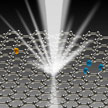 Researchers have demonstrated the experimental realization of the first all-carbon optical diode that is ready for scalable integration along with being inherently broadband in operation with no restrictions on polarization or phase-matching criteria. As they show, harnessing the optical properties of graphene-based materials offers an opportunity to create the all-photonic analogs of diodes, transistors, and photonic logic gates that will one day enable construction of the first all-photonic computer.
Researchers have demonstrated the experimental realization of the first all-carbon optical diode that is ready for scalable integration along with being inherently broadband in operation with no restrictions on polarization or phase-matching criteria. As they show, harnessing the optical properties of graphene-based materials offers an opportunity to create the all-photonic analogs of diodes, transistors, and photonic logic gates that will one day enable construction of the first all-photonic computer.
Sep 1st, 2014
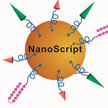 Gene transcription is tightly regulated by proteins called transcription factors. These transcription factor (TF) proteins are master regulators of transcriptional activity and gene expression. Transcription factors are responsible for transcribing the correct genes and therefore for producing the right quantity of proteins. TF-based gene regulation is a promising approach for many biological applications, however, several limitations hinder the full potential of TFs. To overcome these problems, an international team of researchers has developed an artificial, nanoparticle-based transcription factor, termed NanoScript, which is designed to mimic the structure and function of TFs.
Gene transcription is tightly regulated by proteins called transcription factors. These transcription factor (TF) proteins are master regulators of transcriptional activity and gene expression. Transcription factors are responsible for transcribing the correct genes and therefore for producing the right quantity of proteins. TF-based gene regulation is a promising approach for many biological applications, however, several limitations hinder the full potential of TFs. To overcome these problems, an international team of researchers has developed an artificial, nanoparticle-based transcription factor, termed NanoScript, which is designed to mimic the structure and function of TFs.
Aug 28th, 2014
 Nanotechnology applications are currently being researched, tested and in some cases already applied across the entire spectrum of food technology, from agriculture to food processing, packaging and food supplements. Specifically in agriculture, technical innovation is of importance with regard to addressing global challenges such as population growth, climate change and the limited availability of important plant nutrients. Nanotechnology applied to agricultural production could play a fundamental role for this purpose and research on agricultural applications is ongoing for largely a decade by now.
Nanotechnology applications are currently being researched, tested and in some cases already applied across the entire spectrum of food technology, from agriculture to food processing, packaging and food supplements. Specifically in agriculture, technical innovation is of importance with regard to addressing global challenges such as population growth, climate change and the limited availability of important plant nutrients. Nanotechnology applied to agricultural production could play a fundamental role for this purpose and research on agricultural applications is ongoing for largely a decade by now.
Aug 25th, 2014
 Nanotechnology, specifically nanomaterial engineering, has begun to find applications in agriculture and the food industry. Some nanomaterials have unique physicochemical properties that can be exploited for beneficial effects on foods, leading to increased shelf life, enhanced flavor release, and increased absorption of nutrients and other bioactive components. The ability to detect and to measure a given nanomaterial at key time points in the food lifecycle is critical for estimating the nanoscale properties of interest that dictate manufacturing consistency and safety, as well as understanding potential beneficial or adverse effects from food intercalation.
Nanotechnology, specifically nanomaterial engineering, has begun to find applications in agriculture and the food industry. Some nanomaterials have unique physicochemical properties that can be exploited for beneficial effects on foods, leading to increased shelf life, enhanced flavor release, and increased absorption of nutrients and other bioactive components. The ability to detect and to measure a given nanomaterial at key time points in the food lifecycle is critical for estimating the nanoscale properties of interest that dictate manufacturing consistency and safety, as well as understanding potential beneficial or adverse effects from food intercalation.
Aug 22nd, 2014
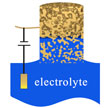 The capillarity-driven uptake of liquids by porous solids can be experienced in daily life, e.g., when a sponge or fabric absorbs water. This spontaneous imbibition or capillary rise phenomenon is also one of the most vivid manifestations of the capillarity of liquids: surface tension. Researchers have now demonstrated a strategy for achieving control over the imbibition kinetics. They show that this process can be switched on and off reversibly when nanoporous gold takes the role of the sponge and an electric potential is used to control the surface tension.
The capillarity-driven uptake of liquids by porous solids can be experienced in daily life, e.g., when a sponge or fabric absorbs water. This spontaneous imbibition or capillary rise phenomenon is also one of the most vivid manifestations of the capillarity of liquids: surface tension. Researchers have now demonstrated a strategy for achieving control over the imbibition kinetics. They show that this process can be switched on and off reversibly when nanoporous gold takes the role of the sponge and an electric potential is used to control the surface tension.
Aug 20th, 2014
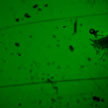 Researchers have demonstrated an active glucose-responsive self-powered fluidic pump based on transesterification reaction of acyclic diol boronate with glucose. The scientific principle of the project is to use well-known glucose/boronate chemistry to design a self-powered micropump device. Instead of synthesizing some new molecules with glucose/boronate reaction, a miniature pump utilizes the energy of this chemical reaction and pumps drugs when glucose levels are high.
Researchers have demonstrated an active glucose-responsive self-powered fluidic pump based on transesterification reaction of acyclic diol boronate with glucose. The scientific principle of the project is to use well-known glucose/boronate chemistry to design a self-powered micropump device. Instead of synthesizing some new molecules with glucose/boronate reaction, a miniature pump utilizes the energy of this chemical reaction and pumps drugs when glucose levels are high.
Aug 19th, 2014
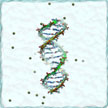 Cytosine (C) modifications such as 5-methylcytosine (mC) and 5-hydroxymethylcytosine (hmC) are important epigenetic markers associated with gene expression and tumorigenesis. However, bisulfite conversion, the gold standard methodology for mC mapping, can not distinguish mC and hmC bases. Recent studies have demonstrated hmC detection via peptide recognizing, enzymes, fluorescence and hmC-specific antibodies - nevertheless, a method for directly discriminating C, mC and hmC bases without labeling, modification and amplification is still missing. New results demonstrate that single base of C, mC and hmC can be discriminated at the latch zone of a nanopore.
Cytosine (C) modifications such as 5-methylcytosine (mC) and 5-hydroxymethylcytosine (hmC) are important epigenetic markers associated with gene expression and tumorigenesis. However, bisulfite conversion, the gold standard methodology for mC mapping, can not distinguish mC and hmC bases. Recent studies have demonstrated hmC detection via peptide recognizing, enzymes, fluorescence and hmC-specific antibodies - nevertheless, a method for directly discriminating C, mC and hmC bases without labeling, modification and amplification is still missing. New results demonstrate that single base of C, mC and hmC can be discriminated at the latch zone of a nanopore.
Aug 15th, 2014
 On 7th February 2014, the Belgian federal government issued a press release declaring that the draft Royal Decree creating a Belgian register for nanomaterials has been approved. The Royal Decree would enter into force on 1st January 2016 for substances manufactured at the nanoscale and on 1st January 2017 for preparations containing a substance or substances manufactured at the nanoscale. We provide here an overview of this future Belgian nano register and some suggestions to be ready for the 2016 and 2017 deadlines.
On 7th February 2014, the Belgian federal government issued a press release declaring that the draft Royal Decree creating a Belgian register for nanomaterials has been approved. The Royal Decree would enter into force on 1st January 2016 for substances manufactured at the nanoscale and on 1st January 2017 for preparations containing a substance or substances manufactured at the nanoscale. We provide here an overview of this future Belgian nano register and some suggestions to be ready for the 2016 and 2017 deadlines.
 Subscribe to our Nanotechnology Spotlight feed
Subscribe to our Nanotechnology Spotlight feed





